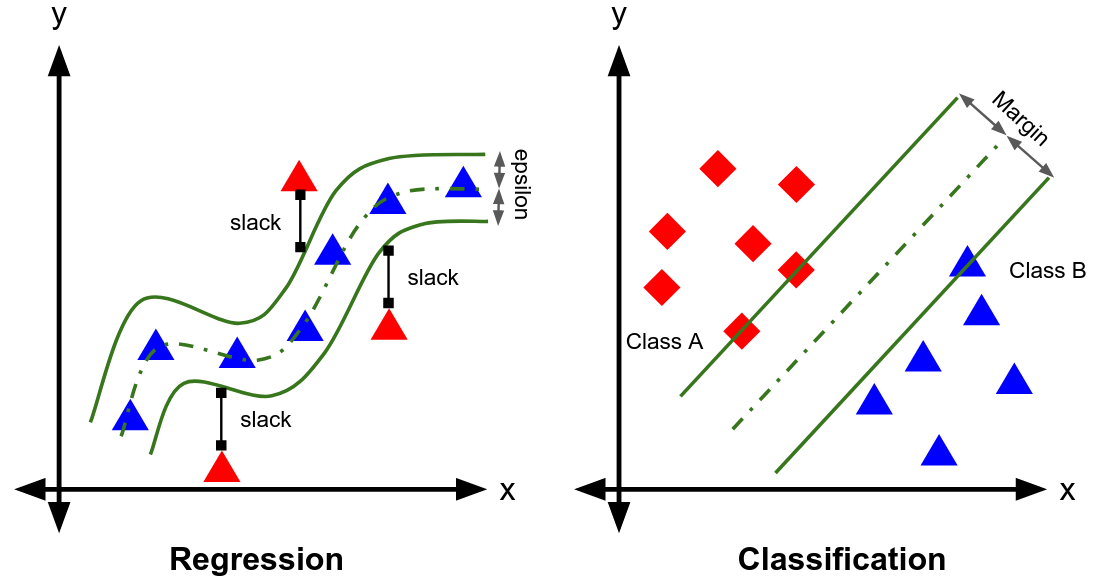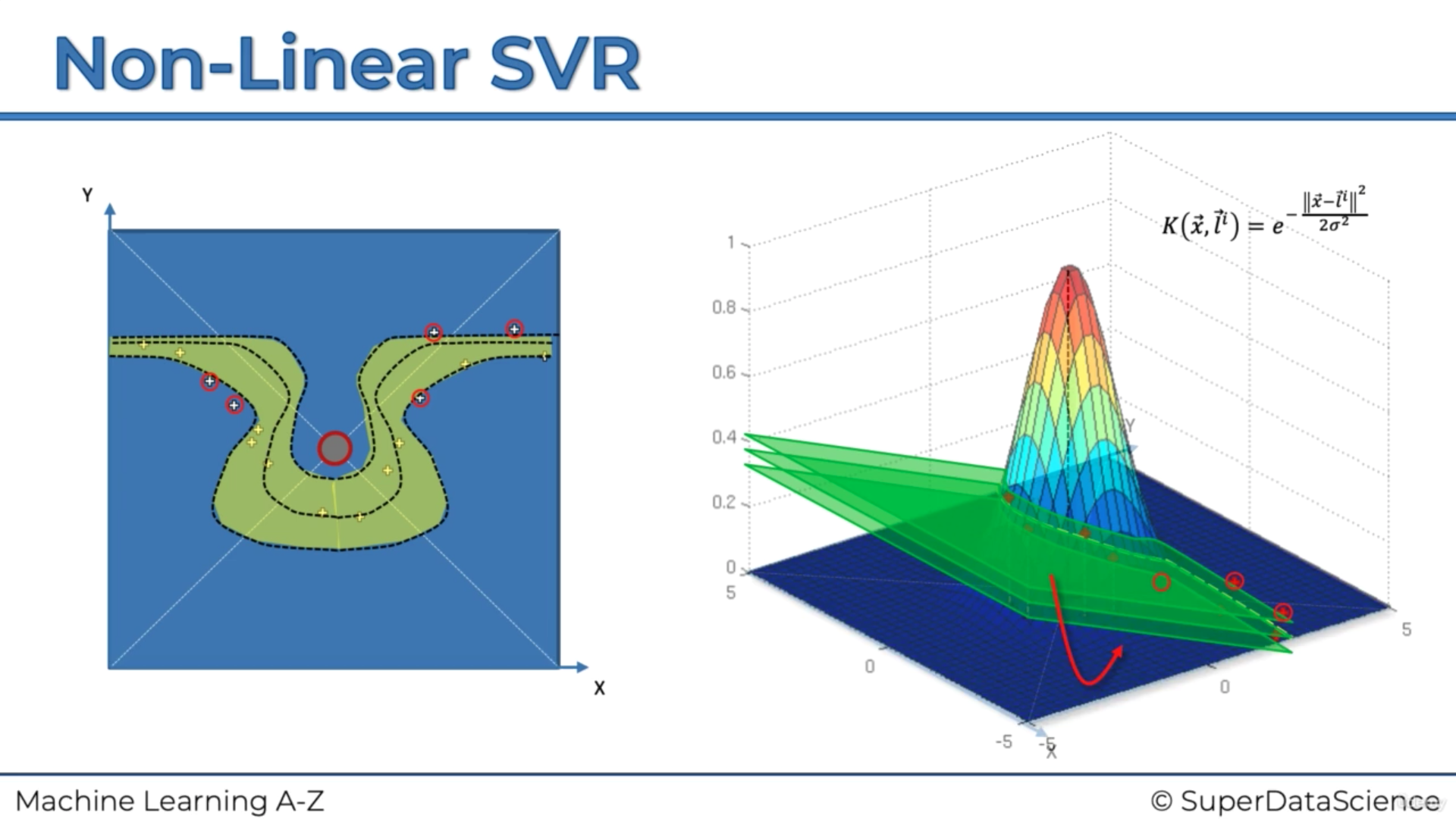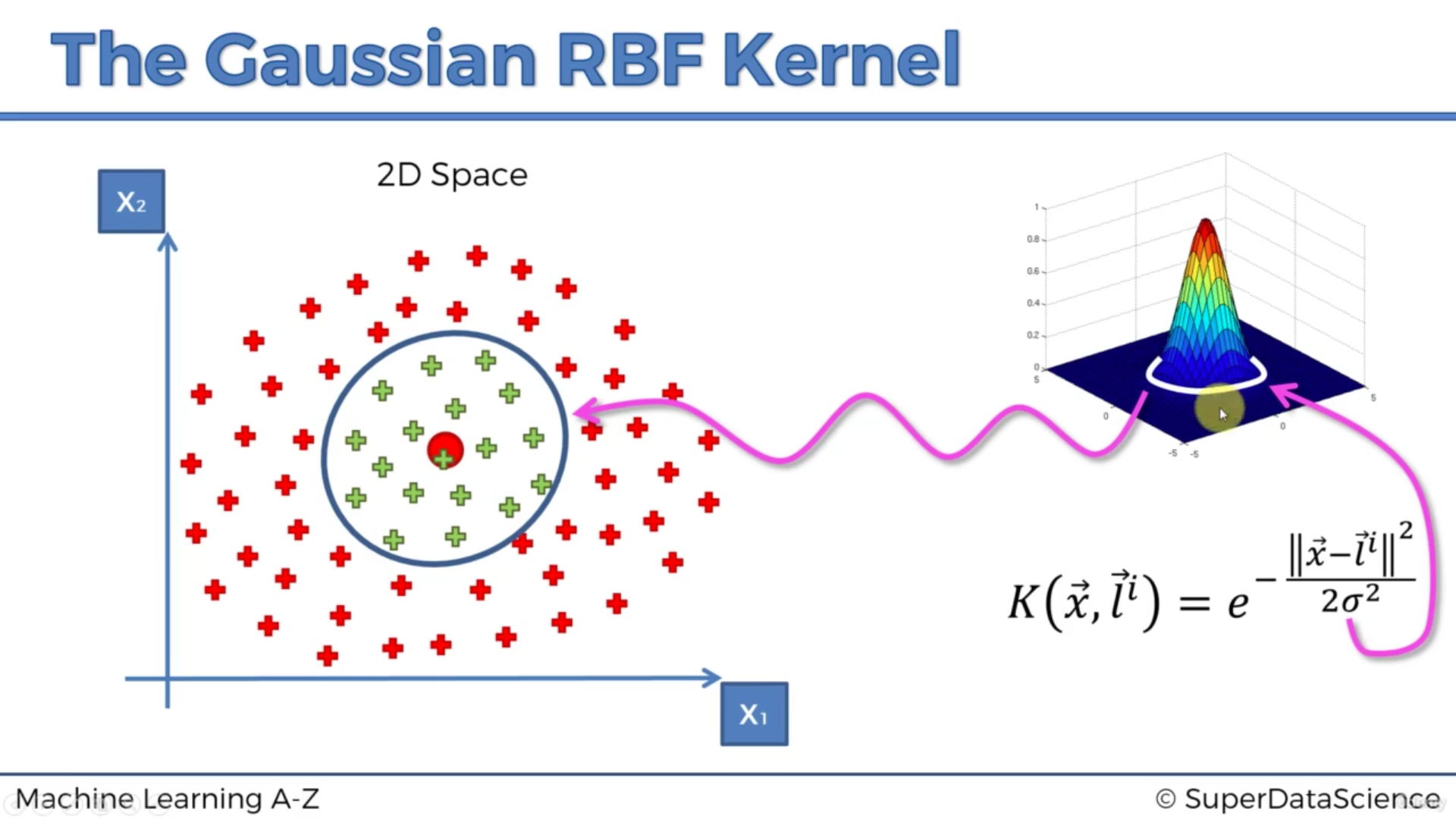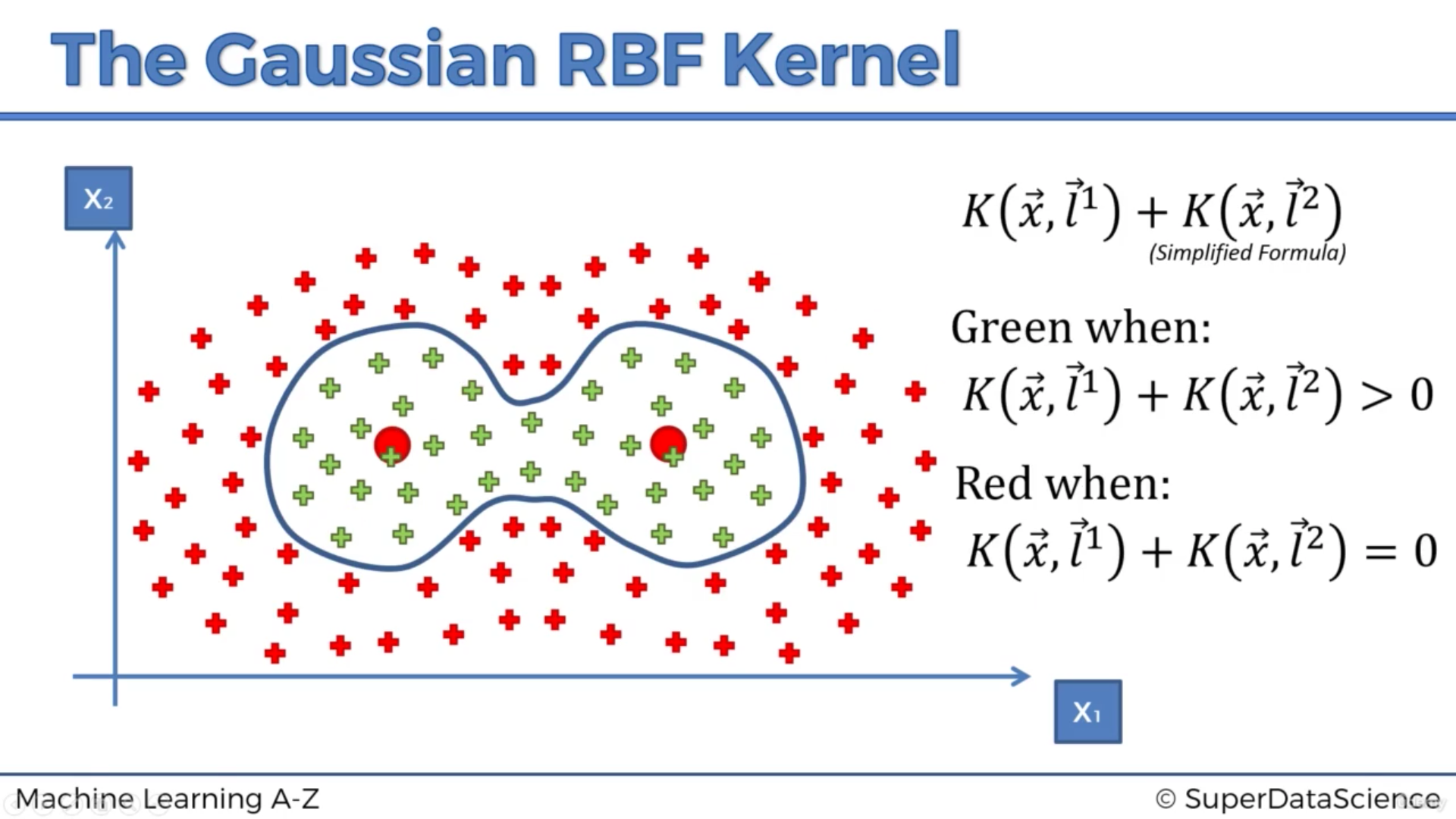Support Vector X

Basic terms
Support Vector
- Support vectors are the data points that lie closest to the separating hyperplane.
- Support vectors are the ones outside the tube (SVR) or exactly at the maximum margin (SVM)
- Support vectors are so called, because they support the structure or formation of the epsilon-insensitive tube or the maximum margin
Margin
= the shortest distance between the hyperplane and the closest data points (support vectors)
Soft margin
= the margin that allows misclassifications. Support vector machine (SVM) uses a soft margin.
Support Vector Regression (SVR)
=> performs regression, continuous data
Kernels SVR = non-linear

Support Vector Machine (SVM)
=> performs classification, discrete data
Support Vector Machines use Kernel Function to systematically find Support Vector Classier in higher dimension.
Kernels SVM
Why we need kernels
Kernel function is kind of a similarity measure. The inputs are original features and the output is a similarity measure in the new feature space.
Given that classification can be non-linear
=> mapping to a higher dimension (implicitly during the cost function optimization) can help:

=> however, the mapping can be highly compute-intensive
=> the Kernel trick can help with that:

More than one kernel can be good too:

Types of Kernel Functions
- Gaussian radial basis function (RBF) Kernel
- Sigmoid Kernel
- Polynomial Kernel
Hyperparameters
: the penalty of each misclassified data (not same for all misclassified examples but proportional to the distance to decision boundary) - for both linear and non-linear kernel
: coefficient of RBF that controls the distance of influence of a single training point. - can be seen as the inverse of the support vector influence radius
- low value: a large similarity radius which results in more points being grouped together.
- high value: the points need to be very close to each other in order to be considered in the same group (or class) -> tend to overfit
- only for non-linear model
- can be seen as the inverse of the support vector influence radius
Pros & Cons
Pros
- works well when there is a clear margin
- effective in high dimensional spaces
- effective in cases where the number of dimensions is greater than the number of samples
Cons
- not suitable for large data sets
- limited performance when the data set has more noise i.e. target classes are overlapping
- underperform when the number of features for each data point exceeds the number of training data samples